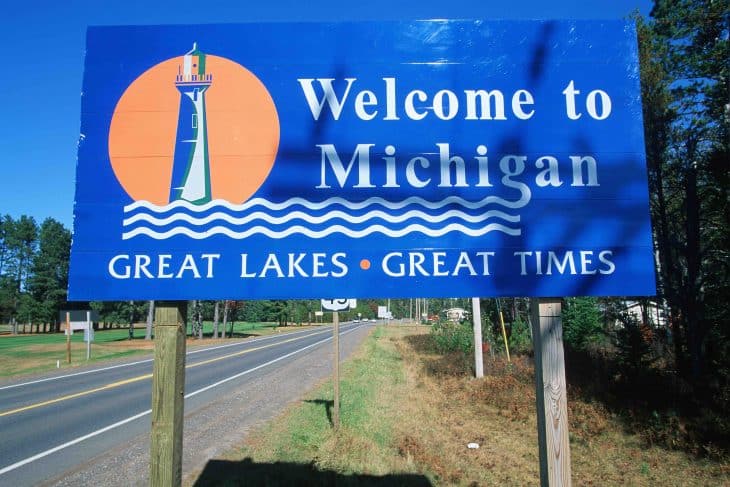
Michigan is the one most brimming with irony among the US states. On one hand, it stands as an industrial powerhouse, both today and in the past. But on the other hand, it also suffered from economic and other problems, both today and in the past. Learn more about this with these 70 Michigan facts.
- Michigan covers an estimated area of around 250,000 km².
- An estimated 10 million people live in the state today.
- It has an estimated population density of around 67 people for every km².
- At its lowest point on Lake Erie, Michigan has an elevation of around 174 meters above sea level.
- On average, the state has an elevation of around 270 meters above sea level.
- French settlers first arrived in what would become Michigan during the 17th century.
- The French built fortresses across Michigan during the 18th century to protect it against British attacks.
- Britain took over the colony in 1763 after the Seven Years War.
- Britain kept part of the colony even after the American War of Independence.
- The USA gained the rest of Michigan with the Jay Treaty of 1794.
- Questions over the Michigan-Canadian border took until 1847 to fully resolve.
- Michigan stayed loyal to the Union during the American Civil War.
- The state’s industry boomed at the start of the 20th century.
- Michigan’s economy began to decline from the 1950s onward.
- The state government began to diversify the state’s economy from the 1980s onward.
- The name Michigan comes from the Ojibwe word mishigami or large lake.
- Michigan counts as both the 10th most populated and 11th largest state in the USA.
- It keeps its capital at Lansing, but Detroit makes up its largest city.
- Most of Michigan belongs in the USA’s Eastern Time Zone, or GMT-5.
- The counties in the state’s Upper Peninsula, however, belong to the USA’s Central Time Zone, or GMT-6.
Was this page helpful?
Our commitment to delivering trustworthy and engaging content is at the heart of what we do. Each fact on our site is contributed by real users like you, bringing a wealth of diverse insights and information. To ensure the highest standards of accuracy and reliability, our dedicated editors meticulously review each submission. This process guarantees that the facts we share are not only fascinating but also credible. Trust in our commitment to quality and authenticity as you explore and learn with us.


